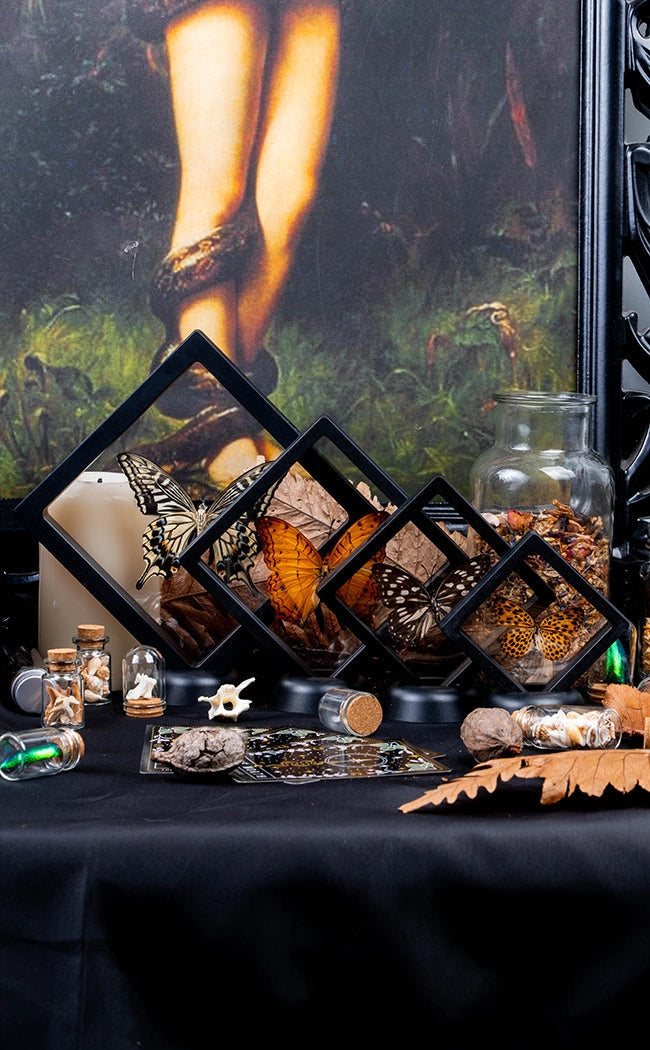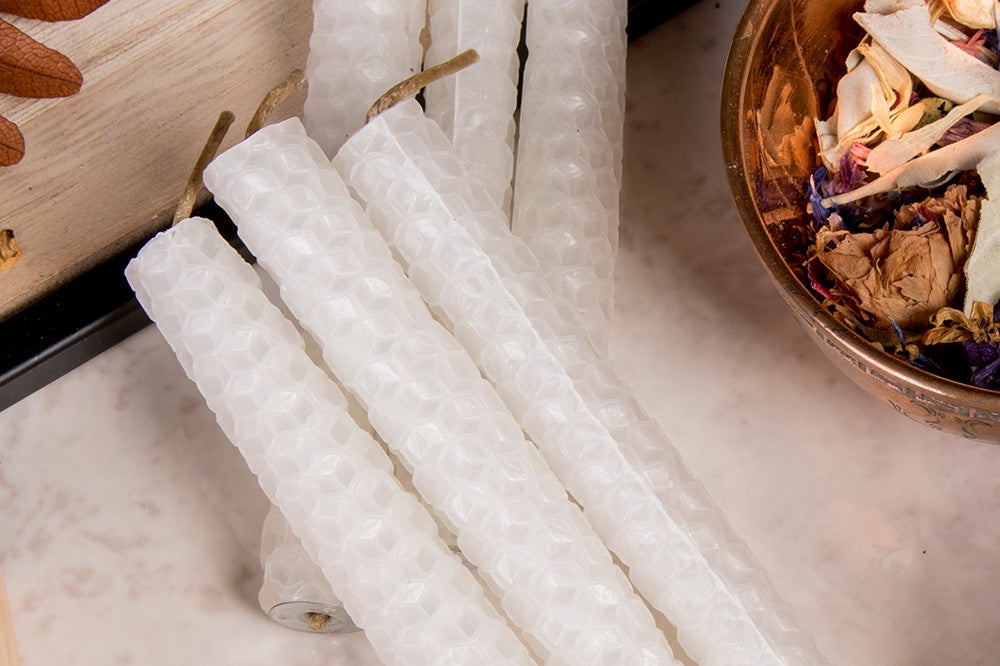Blessed Lammas, Tragics!
It's summer time for us Australian witches and the days are long, the air is hot & humid - when it's not raining of course. Lammas (or Lughnasadh) is the Sabbat between Litha and Mabon celebrating the first grain harvest and a time to be thankful for the abundance in our lives. Lammas is derived from the Old English words "hlāf" (meaning loaf) and "māesse" (meaning mass), showcasing the importance of bread in this Sabbat. Lammas allows us to form a deeper connection with the food we eat, a belief deeply intertwined with the practice of kitchen witchcraft.
Keep reading to learn more about Lammas and find out ways you can celebrate in Australia & beyond!
What is Lammas?
Lammas celebates the beginning of the harvest season, specifically the first fruits of the crops. It marks the midpoint between the summer solstice (Litha) and the autumn equinox (Mabon) in both the Southern and Northern Hemispheres. It is a time to give thanks for the abundance of the first harvest, typically involving grains like wheat and barley.
When is Lammas in 2025?
Traditionally, Lammas in the Southern Hemisphere falls on the 1st of February and in the Northern Hemisphere on the 1st of August. In 2025, the exact date and time Lammas will occur is on February 4th in the Southern Hemisphere and August 7 in the Northern Hemisphere. For more information on upcoming Southern Hemisphere Sabbat dates, head to our blog here.
How to celebrate Lammas
Celebrating Lammas in Australia is a wonderful way to get outside and celebrate the beauty of summer. Here are some ideas for ways to celebrate Lammas in the Southern Hemisphere:
Follow tradition by baking bread
Baking bread perhaps the most notable Lammas tradition. Many European cultures began Lammas celebrations with the cutting of the grains, which would then be divided among the village. The bread made from these grains would then be blessed, and the tradition of preparing, kneading, and baking bread continues today. You should use a recipe that speaks to you but if you’re not sure where to start, here’s a delicious buttermilk bread recipe from The Goddess & The Green Man.
INGREDIENTS
- 3 mugs of strong white flour
- 500 ml of buttermilk (available from the supermarket)
- I teaspoonful of bicarbonate of soda
- Lammas ribbon in your choice of colour - gold, orange, yellow
- Sprouted seeds - these represent regeneration. Source from the supermarket or sprout your own if possible.
Place the flour in a large bowl. Make a well in the centre. Sieve in the blended salt and soda and pour in the buttermilk. Mix well with a wooden spoon until the dough feels springy and then mix in the sprouted seeds. If it feels too sloppy just add a little more flour. Turn it onto a board and cover with a fine dusting of flour. Pat it with your hands until you have a round shape. Take a sharp knife and score lightly into eight sections, one for each festival.
Place onto a greased baking tray and pop your buttermilk bread into a moderate oven for about 20-25 minutes. Keep and eye on it. When the bread is ready it will change colour and it will sound hollow when you tap the bottom. Cool completely on a wire rack. When it is cool, tie it with Lammas ribbon.
Take time to concentrate on the bread you have created and turn the loaf three times saying: "From the fields and through the stones, into fire, Lammas Bread, as the Wheel turns may all be fed. Goddess Bless."
Now take your bread and share it with your family and friends and pass on the generous blessings of this bright and bountiful festival. Eat it fresh as soon as it’s ready if you can.
Get outdoors in nature
Embrace the spirit of Lammas by spending time outdoors in the Australian landscape! Whether it's going for a stroll in a garden, a hike in a local nature reserve, taking part in an outdoor gratitude circle, having a picnic or organising a gathering in the park, connect with the Earth and it's abundance. If the resources are available to you - building a bonfire in which you can gather around and write your list of intentions for Lammas to then be burnt for scrying is a great way to not only connect with your coven, but deeply set your intentions and manifestations for the season.
If you're someone who has had the space to grow you own produce, now is the time to harvest what's in season and share the bounty with friends and family. Host a potluck picnic in the park so everyone can share their favourite dishes and decorate your space with Lammas herbs (sunflowers, calendula, mint, meadowsweet) and colours (harvest green, gold, yellow, orange) of the season. Be sure to also save your seeds for the next harvest!
Get crafty with Lammas-inspired projects
Crafting can be a wonderful and meaningful way to celebrate this time of abundance and gratitude! Your witches at Tragic Beautiful will be celebrating the grain harvest with the creation of corn dolls.
A corn doll, also known as a grain mother, is a figure made by plaiting straw as a part harvest customs before the advent of mechanisation in farming as well as continuing Pagan traditions, particularly on Lammas and Mabon. They were woven to thank the Great Mother for the harvest and represent luck and fertility: once the first harvest had been reaped on Lammas, a corn dolly would be woven from the last cut sheaf. To source the grain for your dolly, you can use any grain: oat, rye, corn or wheat, whichever is most abundant in your area. One easy material to find is corn husks, which can be stripped and dried when cooking the cobs.
Create herb bundles
Creating herb bundles & flower bouquets for your altar and home is a great way to bring the beautiful bounty and harvest of Lammas into your home and altar!
Harvest, forage or buy herbs and flowers that represent the season such as sunflowers, clover, ivy, marigold, peony, rosemary, basil, apple leaf, rose & rose hip and gather them together by their stems.
Using a piece of string, tie them together around halfway up the stems, ensuring the herbs & flowers aren't squished together too tightly, but tight enough they wont fall out when tipped upside down.
Once tied together, take your herbs and suspend them upside down in a sunny window by either tying them around a hook or curtain rod or if there's no place to hang them, place your herb bundles in any dry sunny space. Make sure to put a tea towel, plate or placemat down underneath them to catch any fallen dried leaves from your bundles.
Give these bundles a week to dry! To test how well they've dried, crumble some of the leaves between your fingers - the bundles need to be completely dry before using them to burn for your Lammas rituals or to store on your altar.
Enjoy your bounty, Tragics!
Want to learn more about Lammas? Check out of blog on Lammas Rituals and our blog on Decorating Your Lammas Altar!


























































































































































































